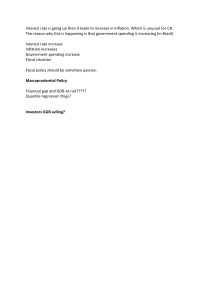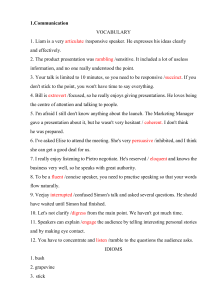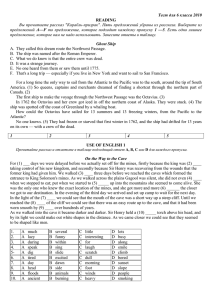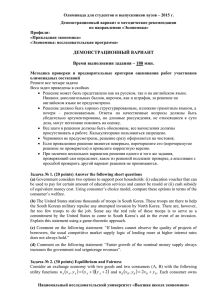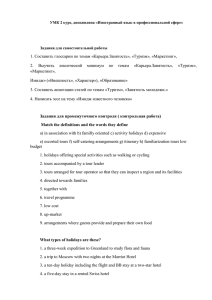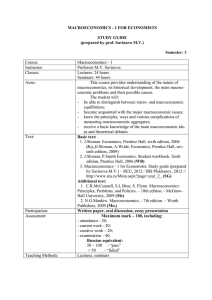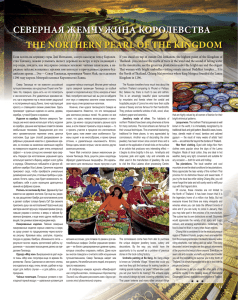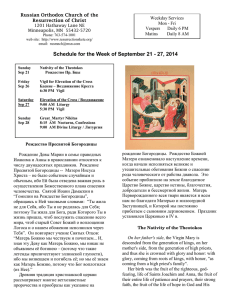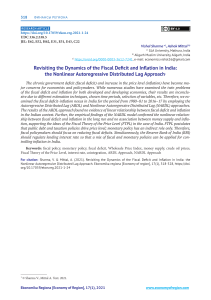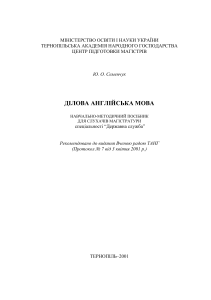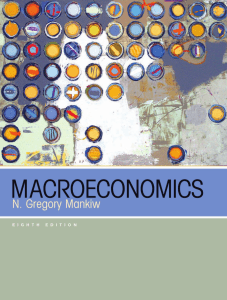1. Translate the following text: THE ISSUE OF RECESSION
реклама
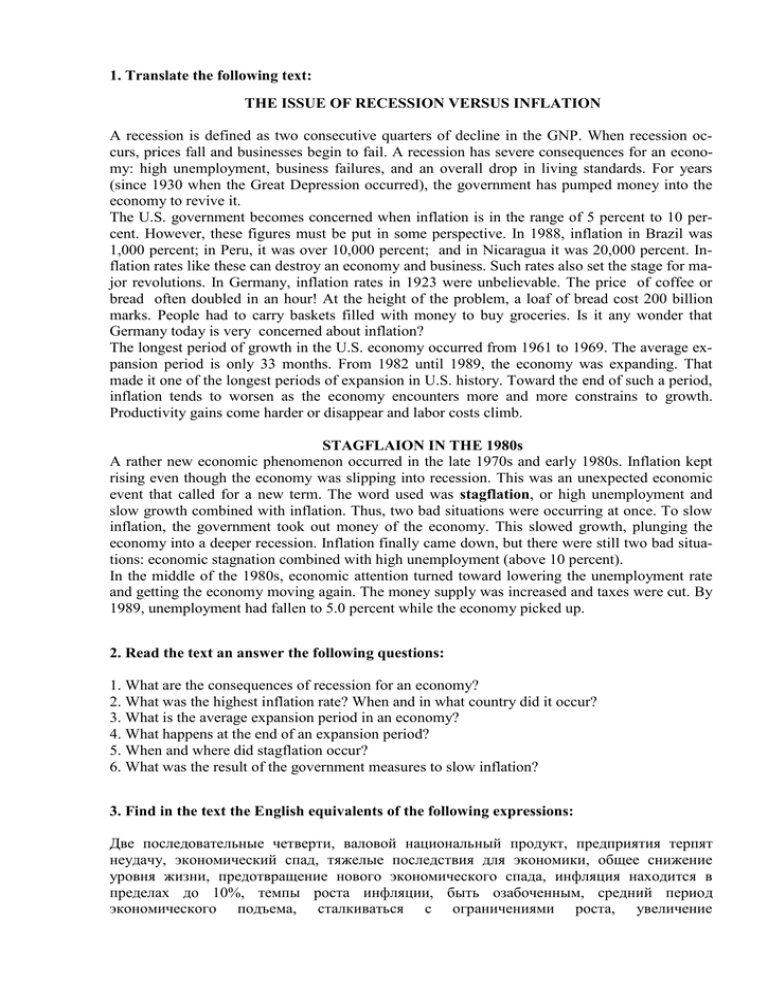
1. Translate the following text: THE ISSUE OF RECESSION VERSUS INFLATION A recession is defined as two consecutive quarters of decline in the GNP. When recession occurs, prices fall and businesses begin to fail. A recession has severe consequences for an economy: high unemployment, business failures, and an overall drop in living standards. For years (since 1930 when the Great Depression occurred), the government has pumped money into the economy to revive it. The U.S. government becomes concerned when inflation is in the range of 5 percent to 10 percent. However, these figures must be put in some perspective. In 1988, inflation in Brazil was 1,000 percent; in Peru, it was over 10,000 percent; and in Nicaragua it was 20,000 percent. Inflation rates like these can destroy an economy and business. Such rates also set the stage for major revolutions. In Germany, inflation rates in 1923 were unbelievable. The price of coffee or bread often doubled in an hour! At the height of the problem, a loaf of bread cost 200 billion marks. People had to carry baskets filled with money to buy groceries. Is it any wonder that Germany today is very concerned about inflation? The longest period of growth in the U.S. economy occurred from 1961 to 1969. The average expansion period is only 33 months. From 1982 until 1989, the economy was expanding. That made it one of the longest periods of expansion in U.S. history. Toward the end of such a period, inflation tends to worsen as the economy encounters more and more constrains to growth. Productivity gains come harder or disappear and labor costs climb. STAGFLAION IN THE 1980s A rather new economic phenomenon occurred in the late 1970s and early 1980s. Inflation kept rising even though the economy was slipping into recession. This was an unexpected economic event that called for a new term. The word used was stagflation, or high unemployment and slow growth combined with inflation. Thus, two bad situations were occurring at once. To slow inflation, the government took out money of the economy. This slowed growth, plunging the economy into a deeper recession. Inflation finally came down, but there were still two bad situations: economic stagnation combined with high unemployment (above 10 percent). In the middle of the 1980s, economic attention turned toward lowering the unemployment rate and getting the economy moving again. The money supply was increased and taxes were cut. By 1989, unemployment had fallen to 5.0 percent while the economy picked up. 2. Read the text an answer the following questions: 1. What are the consequences of recession for an economy? 2. What was the highest inflation rate? When and in what country did it occur? 3. What is the average expansion period in an economy? 4. What happens at the end of an expansion period? 5. When and where did stagflation occur? 6. What was the result of the government measures to slow inflation? 3. Find in the text the English equivalents of the following expressions: Две последовательные четверти, валовой национальный продукт, предприятия терпят неудачу, экономический спад, тяжелые последствия для экономики, общее снижение уровня жизни, предотвращение нового экономического спада, инфляция находится в пределах до 10%, темпы роста инфляции, быть озабоченным, средний период экономического подъема, сталкиваться с ограничениями роста, увеличение производительности, издержки на оплату рабочей силы, экономический застой, налоги были снижены. 4. Give definitions to the following words from the text: GNP (gross national product) recession depression inflation rate productivity stagnation stagflation 5. Complete the sentences below with the words from the text. 1. … is characterized by high unemployment and business … . 2. In most European countries … are higher than in Asia and Africa. 6. When recession occurs … is in the range of over 10 percent. 7. The company increased its … and made a good profit last year. 8. The longest period of … in the U.S. economy lasted from 1982 until 1989. 6. Are the following statements true or false? If they are false correct them. 1. Recession has no influence on the economy of a country. 2. The Great Depression occurred in 1950. 3. When depression occurs businesses fail and unemployment increases. 4. The highest inflation rate reached 20.000 percent in Nicaragua. 5. Toward the end of the period of expansion the economy encounters constraints to growth. 6. The early 1980s was the period of deep recession in the U.S. 7. Translate the following sentences into English: 1. Экономический спад имеет тяжелые последствия для экономики: высокий уровень безработицы, крах предприятий, общее снижение уровня жизни. 2. Высокие темпы роста инфляции могут быть пагубными для экономики и подготовить почву для революций. 3. Самый долгий период экономического роста в США длился 8 лет. 4. Новый экономический феномен произошел в конце 70-х, начале 80-х гг., когда инфляция продолжала расти, хотя экономика переживала спад. 5. Чтобы замедлить темпы инфляции, правительство изъяло деньги из экономики, что привело к ещё более глубокому спаду.
